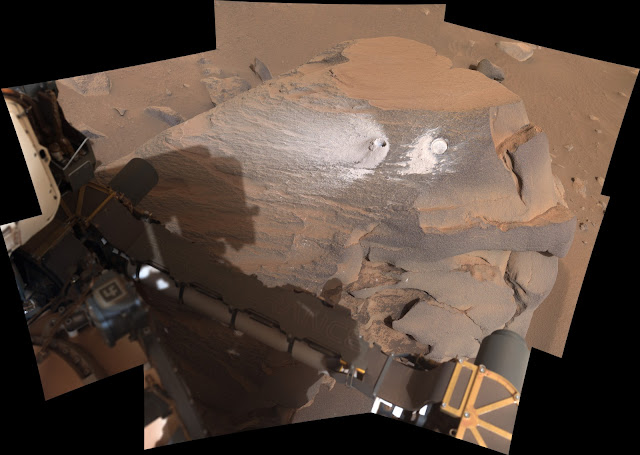Cosmonaut Vasilevskaya, NASA Astronauts Epps, Dyson & O'Hara on Space Station
Posing for a portrait aboard the International Space Station (from left) are, NASA astronauts Jeanette Epps, Tracy C. Dyson, and Loral O'Hara of the United States, and Cosmonaut Marina Vasilevskaya of Belarus. Dyson and Vasilevskaya, along with Roscosmos cosmonaut Oleg Novitskiy of Russia (out of frame), were the newest visitors to the orbital outpost after docking to the Prichal docking module on March 25, 2024, aboard the Russian Soyuz MS-25 crew ship.
This is the first space mission for a citizen of the Eastern European nation of Belarus. Vasilevskaya, Epps, and O'Hara are on their first spaceflight missions.
Belarus, officially the Republic of Belarus, is a landlocked country in Eastern Europe. It is bordered by Russia to the east and northeast, Ukraine to the south, Poland to the west, and Lithuania and Latvia to the northwest.
The arrival of three new crew members to the existing seven people already aboard for Expedition 70 temporarily increases the station’s population to 10.
Dyson, Novitskiy, and Vasilevskaya joined NASA astronauts Loral O’Hara, Matthew Dominick, Mike Barratt, and Jeanette Epps, as well as Roscosmos cosmonauts Oleg Kononenko, Nikolai Chub, and Alexander Grebenkin of Russia, already living and working aboard the space station.
Dyson will spend six months aboard the station as an Expedition 70 and 71 flight engineer, returning to Earth in September with Oleg Kononenko and Nikolai Chub of Roscosmos (Russia), who will complete a year-long mission on the laboratory.
Novitskiy and Vasilevskaya will be aboard the station for 12 days, providing the ride home for O’Hara on Saturday, April 6, aboard Soyuz MS-24 for a parachute-assisted landing on steppe of Kazakhstan. O’Hara will have spent 204 days in space when she returns.
Follow Expedition 70 Updates:
https://blogs.nasa.gov/spacestation/
Expedition 70 Crew
Station Commander: Oleg Kononenko (Russia)
Roscosmos (Russia): Nikolai Chub, Alexander Grebenkin (Russia), Oleg Novitskiy (Russia), Marina Vasilevskaya (Belarus)
NASA: Loral O'Hara, Matthew Dominik, Mike Barrett, Jeanette Epps
An international partnership of space agencies provides and operates the elements of the International Space Station (ISS). The principals are the space agencies of the United States, Russia, Europe, Japan, and Canada. The ISS has been the most politically complex space exploration program ever undertaken.
Image Credit: NASA's Johnson Space Center (JSC)
Image Date: March 25, 2024
#NASA #Space #ISS #Science #Astronauts #UnitedStates #Cosmonauts #Belarus #Беларусь #Russia #Россия #Roscosmos #Роскосмос #Expedition70 #Expedition71 #HumanSpaceflight #SpaceLaboratory #STEM #Education
.jpg)








Petr%20Horalek-EPoD.jpg)
APoD.png)
.jpg)






















.jpg)